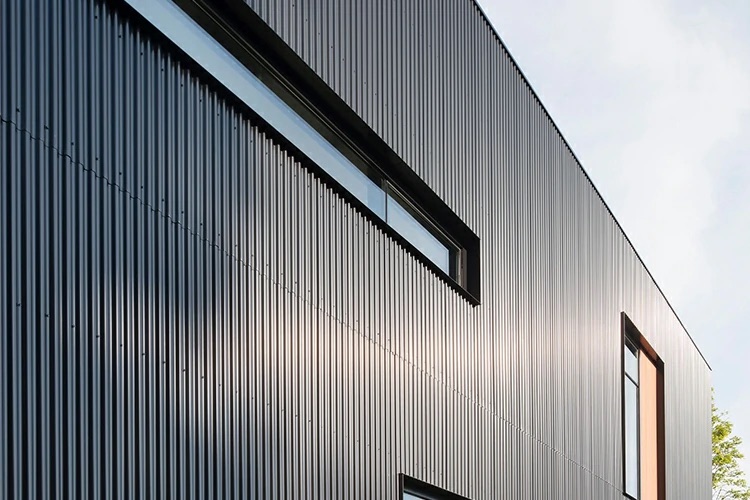Precast wall panels are revolutionizing modern architecture and interior design, offering a blend of durability, efficiency, and aesthetic versatility. Whether you’re a DIY enthusiast, a homeowner, or a professional in the home improvement industry, understanding precast wall panels can help you make informed decisions for your next project. This guide dives deep into what precast wall panels are, their benefits, and how they can transform your space.
What Are Precast Wall Panels?
Precast wall panels are construction elements made by casting concrete or other materials into reusable molds in a controlled environment. These panels are then transported to the construction site and assembled into place. Their versatility allows them to be used for both structural and decorative purposes in residential, commercial, and industrial settings.
Key Features of Precast Wall Panels:
- Durability: Resistant to wear and tear, precast wall panels can withstand extreme weather conditions.
- Customizability: Available in various sizes, textures, and finishes to suit different design needs.
- Eco-Friendly: Often made using sustainable materials, contributing to green building practices.
- Time Efficiency: Precast panels are manufactured off-site, reducing on-site construction time.
Benefits of Precast Wall Panels
1. Enhanced Aesthetic Appeal
Precast wall panels can mimic materials like wood, stone, or brick, offering a high-end look without the associated costs. For instance, textured panels can create a warm, rustic vibe, while sleek finishes deliver modern elegance.
2. Cost Efficiency
While the initial investment might be higher than traditional methods, precast wall panels save money in the long run through reduced labor costs, faster installation, and minimal maintenance.
3. Structural Integrity
Thanks to their robust construction, precast wall panels offer superior load-bearing capacity. They are ideal for exterior walls, retaining walls, and even high-rise buildings.
4. Weather Resistance
Precast panels are impervious to moisture, wind, and temperature fluctuations, ensuring long-lasting performance in any environment.
Applications of Precast Wall Panels
Precast wall panels are used in various settings, from residential homes to large commercial projects. Here are some popular applications:
Residential:
- Accent walls for living rooms or bedrooms
- Garden retaining walls
- Patio enclosures
Commercial:
- Office building exteriors
- Retail store facades
- Parking structures
Industrial:
- Warehouses
- Factories
- Noise barriers along highways
Types of Precast Wall Panels
Different types of precast wall panels are designed to cater to specific needs. Below are some common options:
1. Solid Wall Panels
Used primarily for load-bearing purposes, these panels provide excellent insulation and are ideal for structural applications.
2. Insulated Wall Panels
These panels combine a layer of insulation between two concrete panels, ensuring energy efficiency while maintaining durability.
3. Textured Wall Panels
Perfect for decorative purposes, these panels add visual interest to any space with their intricate designs and finishes.
4. Hollow-Core Panels
Lightweight and easy to install, hollow-core panels are suitable for non-load-bearing applications like partition walls.
Installation Process for Precast Wall Panels
Installing precast wall panels is a straightforward process that requires careful planning and execution. Here’s a step-by-step guide:
- Design and Measurement
- Assess the project site and finalize dimensions and panel designs.
- Select finishes and textures to match your design goals.
- Manufacturing
- Panels are created off-site using molds, ensuring precision and quality.
- Transportation
- Completed panels are transported to the project site using specialized equipment.
- Installation
- Panels are lifted into place using cranes and securely fastened to the structure.
- Finishing Touches
- Apply paint, sealants, or additional decorative elements as needed.
Comparison: Precast Wall Panels vs. Traditional Wall Materials
| Feature | Precast Wall Panels | Traditional Wall Materials |
|---|---|---|
| Durability | Highly durable | Moderate to high |
| Installation Time | Quick and efficient | Time-consuming |
| Customizability | Wide variety of finishes | Limited options |
| Cost | Cost-effective in the long term | Higher labor costs |
| Maintenance | Minimal | Requires regular upkeep |
Common FAQs About Precast Wall Panels
1. Are precast wall panels customizable?
Yes, precast wall panels can be tailored in terms of size, texture, and finish to meet specific design requirements.
2. How long do precast wall panels last?
Precast wall panels are designed to last for decades, often outliving traditional materials.
3. Can precast wall panels be used indoors?
Absolutely! They’re perfect for creating accent walls, partitions, and other interior features.
4. Are precast panels environmentally friendly?
Many manufacturers use sustainable materials and processes, making precast wall panels an eco-friendly choice.
5. What is the cost of precast wall panels?
The cost varies based on size, design, and application, but they are generally cost-effective in the long run due to reduced labor and maintenance expenses.
Conclusion: Why Choose Precast Wall Panels?
Precast wall panels offer unmatched versatility, durability, and aesthetic appeal, making them a top choice for modern construction projects. Whether you’re looking to enhance the structural integrity of a building or add a unique decorative touch, these panels deliver on every front. Explore options like textured finishes or insulated panels to meet your specific needs and elevate your space effortlessly.








